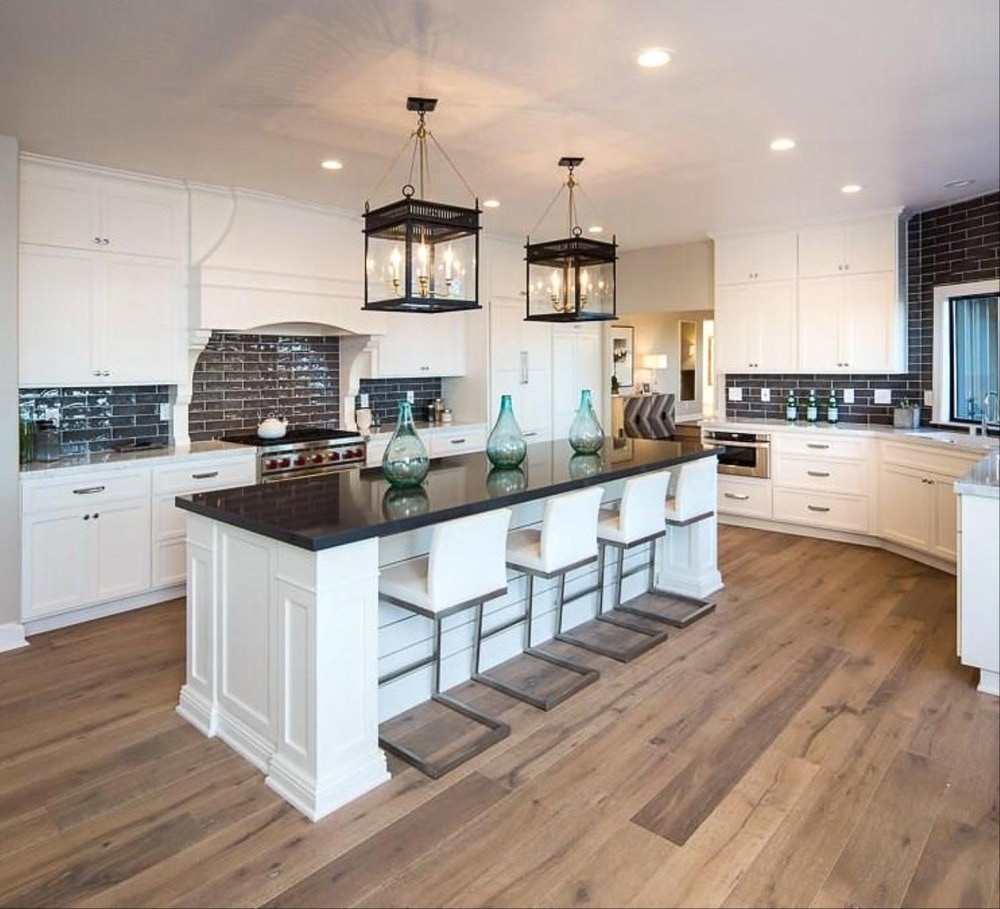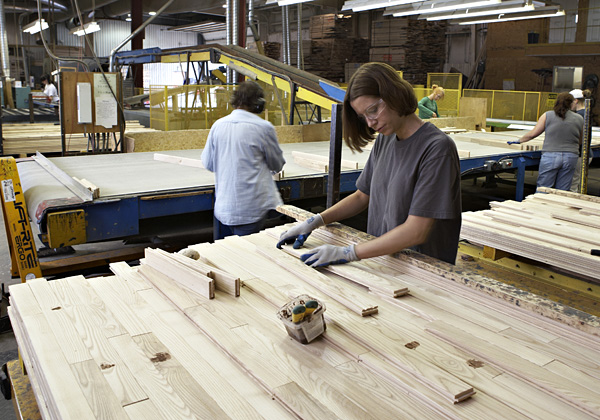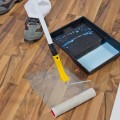Wood Flooring in the Kitchen: Pros and Cons
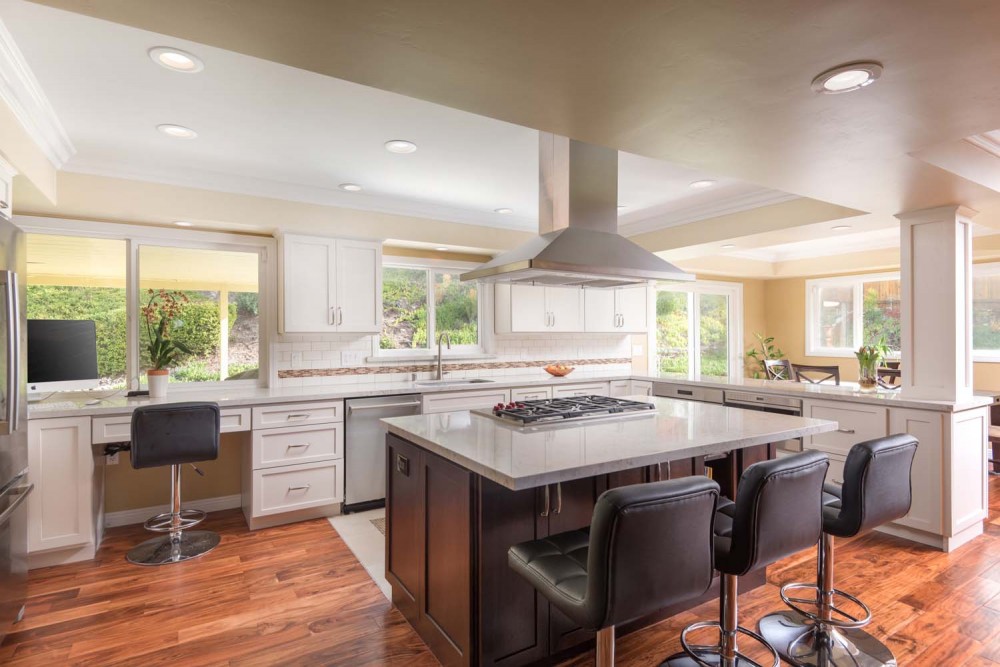
Wood flooring has long been considered a luxurious way to bring warmth and timeless style to a space. This traditional flooring option isn’t usually considered an appropriate choice for kitchen design because it is highly susceptible to water damage. Before you count beautiful hardwoods out as a flooring option for your consider, weigh the advantages and disadvantages of the product and check out a few finishing options that help it stand up to the daily wear and tear of this heart of the home.
Wood Flooring in the Kitchen: Advantages
Hardwood flooring is revered as luxurious because of the many benefits it brings to a space. It is lovely to look at, timeless in design, and easy to refinish whenever styles change. Consider all the advantages of using hardwood flooring in your kitchen when deciding which flooring to install.
Appearance
Solid hardwood floors showcase the natural beauty of wood grain and make any room appear warmer and more elegant. Hardwood flooring can be purchase prefinished or unfinished and come in a wide range of different hues, making it easy to find a finish that coordinates with any kitchen design. If you have an open-concept home, running the same flooring from the front door throughout the living areas and kitchen can help make the space appear more expansive and cohesive.
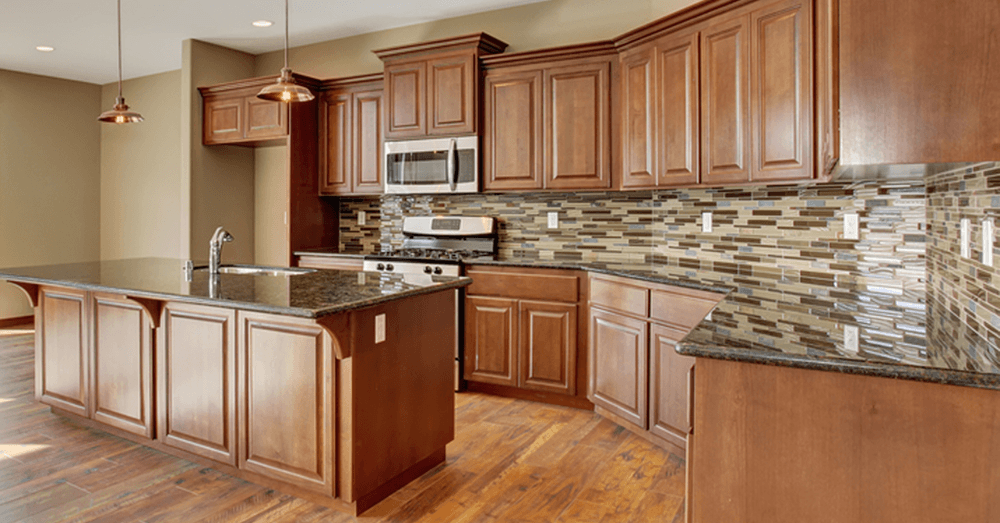
Durability
Hardwood is considered a generally durable product. The thick and solid construction of the planks make it easy to sand them down and refinish them whenever they start to show signs of wear. Using pads under stool legs and dining chair legs will help to prevent scratches, dents, and dings on wood flooring in the kitchen. In particularly high-traffic areas, such as just inside a sliding glass door or under a dining table, area rugs can also provide an added layer of protection.
Warm Underfoot
When it comes to the level of hardness, hardwood flooring falls somewhere in between ceramic tile and linoleum. The warmth and softness makes it comfortable to walk on. Choose a finish with yellow undertones and it will provide visual warmth as well.
Refinishing Options
When deciding to use hardwood flooring in the kitchen, it is essential to finish the floors with a highly durable polyurethane designed to hold up to light spills and splatters. The same oil finishes you use for hardwood floors in a living room just aren’t strong enough for kitchen use. Instead, opt for a polyurethane designed to keep spills from penetrating the wood, reducing the chance of water damage and food stains. A polyurethane makes the floor easy to wipe up as well.
Wood Flooring in the Kitchen: Disadvantages
As with any type of flooring, there are drawbacks to choosing hardwood floors for a kitchen. Before selecting any flooring, make sure to consider the daily use of the space. How many people are in the household? Hos frequently and to what extent do you cook? Weigh all the pros and the cons of the product to see if it makes a suitable choice for your home.
Not Water Resistant
It is no secret that water and wood don’t mix. Prolonged exposure to moisture can cause hardwood flooring to swell, warp or even split. If there is ever a leak from the dishwasher or sink that goes unattended, a section of flooring may require repair or even replacement. Do not wet mop hardwood floors, as too much moisture can seep in through the joints and seams of the flooring.
Regular Maintenance
If you do choose to feature hardwood flooring in the kitchen, some daily maintenance will help them hold up. First, make sure to wipe up any water spills from melting ice or sink splashes immediately. Sitting water is the worst enemy of hardwood flooring. Protect them from grease or light splatters at both the stove and the sink by adding padded orthopedic mats in the areas you frequently stand to work.
Because the kitchen is one of the most-used rooms in the home, expect to need to refinish the floors somewhat regularly. Fortunately, hardwood floors can be sanded and refinished in the course of their lifetime.
Expense
Hardwood flooring is one of the more costly flooring options in any room of the home. It is often more expensive than ceramic tile or luxury vinyl flooring, both of which make popular kitchen options.
Alternative Options
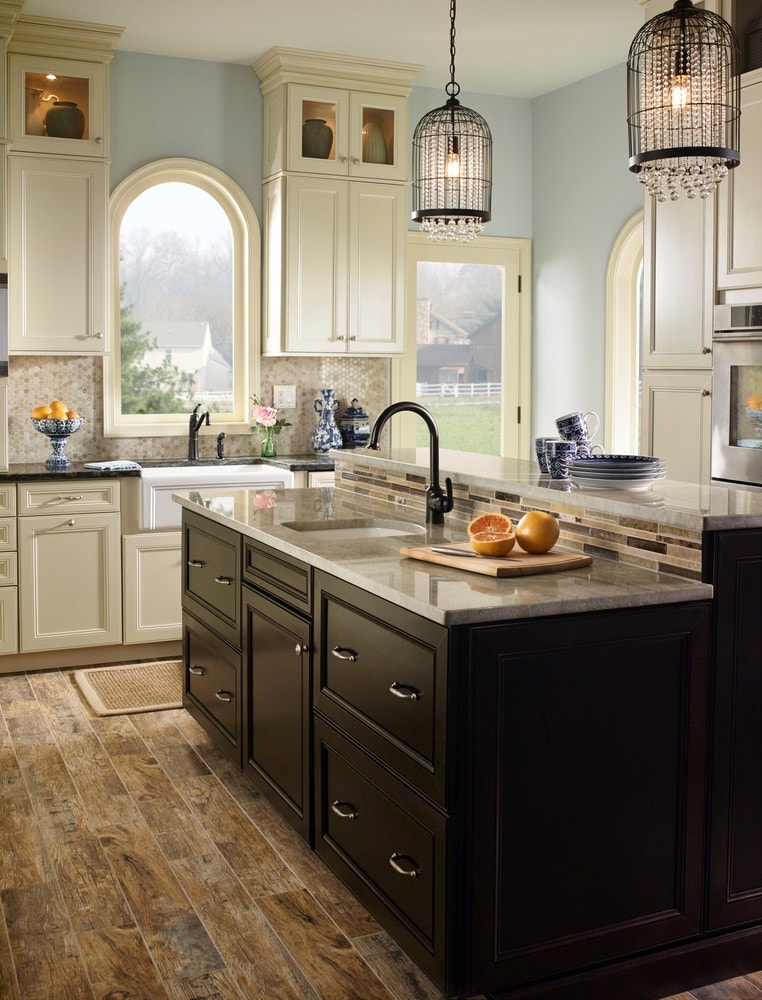
You can enjoy the look of hardwood floors in your kitchen without any of the drawbacks by choosing wood-look ceramic tile or luxury vinyl wood planks instead. Both ceramic tile and luxury vinyl come in designs that offer the look of wood but they provide the added benefit of being completely waterproof. Cork and linoleum floors are also good choices for kitchens. Cork is naturally antimicrobial and linoleum is one of the most affordable of all of the kitchen flooring options.
Choosing the Right Hardwood Flooring for Your Kitchen
If you have decided on hardwood flooring for the kitchen, there are a couple of ways you can ensure the new floors will look great for many years to come. If you are choosing new hardwood floors, look for a wood species with a higher hardness scale rating. The stronger the wood species, the more resistant it will be to the daily traffic and moisture a kitchen sees.
Fir and pine are soft, making them a poor choice for kitchen floors. Brazilian walnut and Patagonian Rosewood are two of the hardest and most durable Consider the finish of the cabinets and dining room furniture and choose a finish that complements the existing colors and tones in the space. With so many different wood species and finishes available, it is easy to find just the right one for any home.

